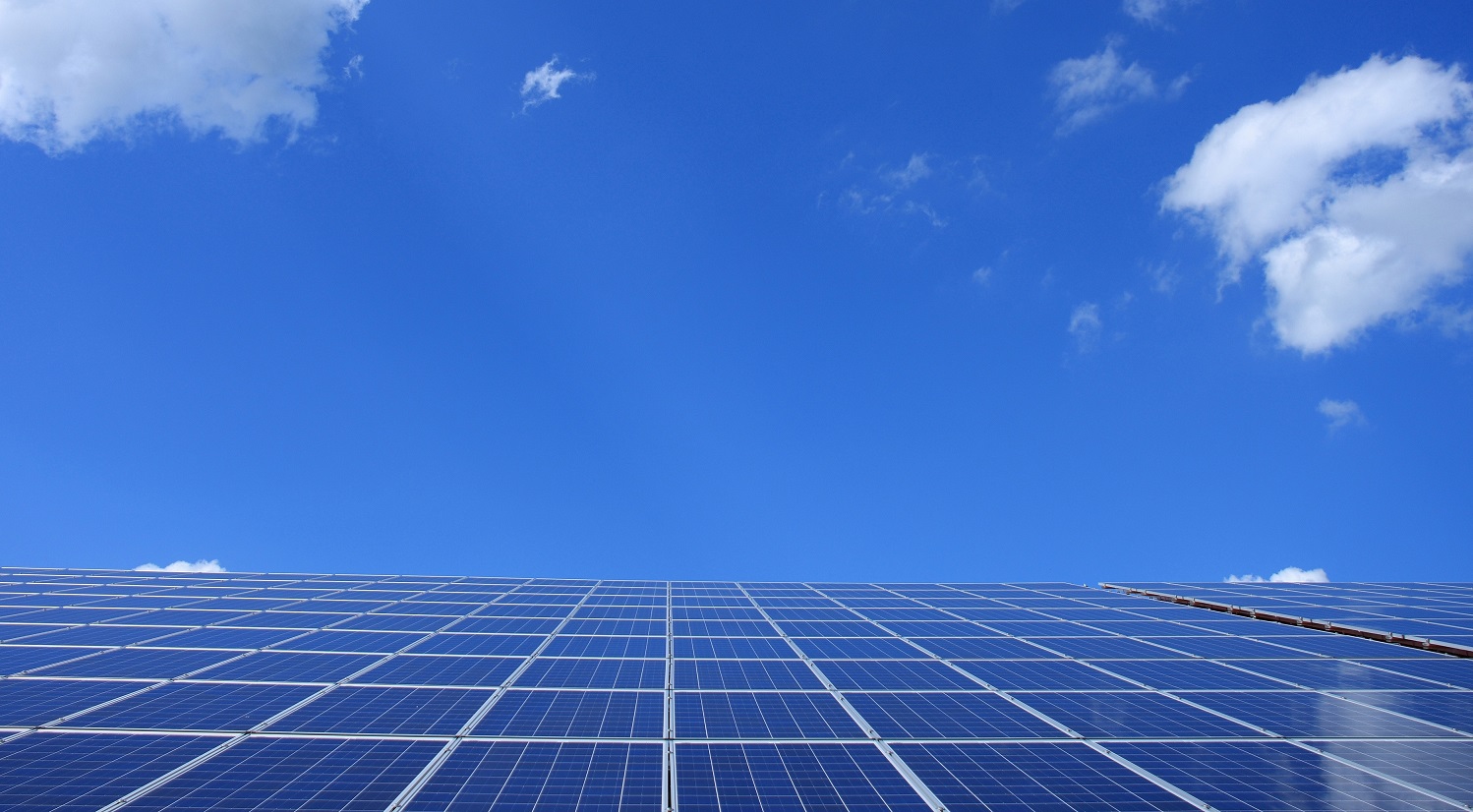
Frequently Asked Questions
What is Building Electrification?
Building electrification refers to relying on electrical power as the sole energy source of a building, rather than a mix of electricity and gas. This means there are no gas hookups for common household appliances like furnaces, kitchen stoves, washers, and dryers; everything is all-electric. It allows us to utilize the most efficient heating and cooling appliances, reduce indoor air pollution and fire hazards, and save money by avoiding the cost of connecting the building to the underground natural gas distribution pipelines.
In order to transition away from burning fossil fuels, it is necessary to electrify everything in our buildings. “Natural gas” is primarily composed of methane, a powerful greenhouse gas. Natural gas combustion in homes and businesses is increasingly responsible for a larger proportion of greenhouse gas emissions (GHG). Building electrification is an essential element in combating climate change, with the added co-benefit of reducing indoor air pollution associated with natural gas combustion.
Why is this important?
The State of California aims to reduce its greenhouse gas emissions to a level 40% below its 1990 emissions by 2030, and 80% by 2050 in order to help limit the global temperature rise to 1.5 °C this century.

Unless new and bold clean energy policies are enacted, California will not hit its 2030 target. Since the industrial, agricultural, and transportation sectors have been identified as the hardest to decarbonize, other sectors, including buildings, will have to compensate. One big area of focus for cities across the US is gas-free buildings.
Burning natural gas, propane and other fuels in buildings emits nearly 10% of California’s greenhouse gases (CARB Greenhouse Gas Emission Inventory). Leaks from pipelines are not accounted for in those emissions but add a considerable amount of methane to the atmosphere.
By 2045, the state is legally bound to achieve 100% carbon-free electricity. Already, with our sources of electricity shifting away from fossil fuels toward renewables, emissions from electricity generation are constantly decreasing; all-electric buildings can, and increasingly will, result in lower emissions.
For public health, eliminating indoor fuel burning means cleaner, safer air in our homes. By switching to all-electric buildings, the risk of intoxication by gases such as carbon monoxide and respiratory conditions stemming from nitrogen dioxide inhalation, are significantly decreased. Combustibles in buildings are also a fire hazard that electrification eliminates.
What are the health implications?
The gas piped into homes for heating and cooking may not be as dirty as coal or oil, but still creates a great deal of pollution—right inside our houses. Here in San Diego, we already suffer from some of the worst air quality in the nation. Gas appliances are estimated to release 12,000 tons of carbon monoxide and 15,900 tons of nitrogen oxides in California every year. When gas is used for cooking and powering appliances, it traps those gases and other pollutants indoors where we can’t help but breathe them in.
Gas appliances fill homes with the same pollution found in car exhaust fumes. Studies have linked household gas use to asthma and other respiratory illnesses, as well as cardiovascular diseases. Developmental problems can also occur in children. The smaller the space, the more concentrated the pollutants, meaning that renters and people living in smaller, older homes, such as many elderly people, are particularly vulnerable. Renters, especially in poorer communities, may be living with old, inefficient, or poorly maintained appliances, which increases their health risks as well.
Electrification erases these health threats, both from the immediate space and from the area at large. All-electric appliances mean no more pollutants from energy in the home, lowering the risk of a host of diseases. Plus, cities getting their electricity from clean sources instead of natural gas eliminates the outdoor pollution and climate impacts associated with fracking, transporting, and burning gas.
Are other cities moving toward 100% building electrification?
Yes! In California alone, over 50 jurisdictions have passed ordinances requiring or encouraging that new construction be all-electric or are in the process of applying with the California Energy Commission (CEC). Cities include San Francisco, San Jose, Santa Cruz, and Berkeley.

Los Angeles is also considering its own ordinances. Cities throughout the rest of the country, such as Brookline in Massachusetts, are rapidly following suit. Maine and New Jersey are planning to eliminate natural gases in buildings in the coming years.
California agencies, the CEC and the California Public Utility Commission (CPUC), are realizing the growing trend and working to update the building codes, incentivize appliance retrofit, and train professionals in the building sector.
In addition to cities, homes across the US are moving toward all electric. About 25% of homes in the US are all-electric homes.
How does this affect existing homeowners or people looking to buy a home?
Different cities are passing a variety of electrification ordinances. Most, if not all, are concentrating on new construction—mandating that new buildings be more environmentally friendly in a variety of ways, such as being all-electric, including solar panels and electric vehicle (EV) charging stations, or merely requiring that electrical hookups be installed alongside gas fixtures for future use. Other cities are simply setting specific requirements for the energy efficiency of buildings, whether all-electric or mixed-fuel.
Existing homeowners are unlikely to be affected since most of these ordinances are directed at new construction. Some cities are including homes undergoing certain types of extensive renovations. For example, in some places, if you replace the roof or add a second story, there may be a requirement to add solar panels or meet certain environmental standards. For buyers, unless you are building your own home, it’s unlikely to affect you directly. For people who are purchasing a newly constructed home, these new requirements will be followed as the house is built, meaning your home will be cleaner, greener, and better for you and the environment.
What are justice and equity considerations?
Low-income communities of color often contribute least to the climate crisis but are hit the hardest by the impacts of climate change. These communities of concern are often renters and those living in regions with fewer resources. A 2013 study detailed that kids growing up in homes with gas stoves have a 42% increased risk of asthma, and lower-income communities are particularly at risk. Due to a historic legacy of disinvestment, low-income communities of color must be first in line to access clean energy homes and neighborhoods that will secure affordability and resiliency in the face of the climate crisis. The Building Electrification Action Plan for Climate Leaders provides valuable insights about how to address this issue. Incentives, rebates, inclusive financing, electrification-friendly rates and tenant protections are some of the means to achieve success in meeting the needs of these communities.
Building electrification can bring many benefits to these environmental justice communities such as cleaner air and healthier homes. There are also opportunities for good jobs as well as energy efficiency and lower utility bills. As the costs of maintaining California’s gas system increase and are spread over fewer customers, it is important to provide assistance to those who face barriers to electrification. A report by Greenlining on Equitable Building Electrification provides us with guidelines for how to address the issues faced by this population. These include assessing community needs, fostering community-led decision making and ensuring funding to improve outcomes.
How does this fit into our local, regional, and state climate goals?
This region has some of the most progressive climate goals in the nation. Between the City of San Diego’s Climate Action Plan and the State of California’s goals, including SB 32 (to GHG 40% below 1990 levels by 2030), our region has committed to taking action on the key areas that are causing rapid climate change.
In order to achieve these goals and counter the worst impacts of climate change and climate injustice, we must electrify our buildings. Natural gas is the third most significant source of emissions and air pollution in our region. Buildings are the second largest contributor to GHG emissions in California, behind the transportation sector.
The energy used in buildings is such a significant contributor to emissions, San Diego County identifies this energy category as the “greatest opportunity to achieve emissions reductions” of all the areas outlined in the County’s Climate Action Plan.
Electrification can reduce GHG emissions from heating and hot water by up to 70%. Electrification has other benefits, such as it lowers energy costs, reduces the cost of building new homes, improves indoor air quality, creates new jobs, and improves climate resiliency.
What about the impacts on labor?
A shift away from gas infrastructure to electric-only buildings will result in the loss of fossil fuel jobs and the creation of new clean energy jobs. A recent study, California Building Decarbonization: Workforce Needs and Recommendations, shows that electrifying 100% of California’s existing and new buildings by 2045 would create the equivalent of over 100,000 full-time jobs, even after accounting for losses in the fossil fuel industry. As we change the way we build houses and commercial buildings, it is essential that we plan for a managed transition.

Our public policies should commit to ensuring that the jobs created through clean energy investments are high-quality. Newly created jobs should be equivalent in terms of wages, benefits, and working conditions. According to the Zero Carbon Action Plan, “Strong labor unions and effective job training programs are both necessary to promote high-quality job opportunities and support a just transition.” Policymakers can engage with affected unions and create the conditions to attract workers. Funds used to subsidize the fossil fuel industry should be used instead to provide funding for transition assistance. With the new jobs created there must also be training programs that reach low-income communities of color. With electrification, there is the opportunity to create more equitable employment opportunities.
Who’s supporting this?
To date, over 40 California jurisdictions have adopted ordinances that require some level of building electrification. Many cities throughout the US have either adopted ordinances or are in the process of passing ordinances for gas bans or all-electric buildings. Organizations such as Sierra Club and Earthjustice have been advocating for building electrification for years. On the local level, SanDiego350 and the San Diego Building Electrification Coalition (SDBEC) are working alongside dozens of partner organizations to expand electrification policies throughout San Diego County.
What are the economic impacts?
Globally, wind and solar are the cheapest form of bulk energy in most major markets. The cost of wind and solar, the clean energy sources that can provide for electrification, is continuing to decrease. In the US gas is exceptionally cheap, however solar panels can now deliver power to 650 homes for one hour for $31 to $111 an hour, according to Lazard, a leading financial advisory firm. On the other hand, natural gas peaking plants, which utilities can turn on and off quickly to meet surging demand, do the same for $122 to $162 an hour.
Beyond this, the most popular gas plants built today are only economically optimal if they operate for 60 to 90% of the time. Therefore as solar and wind continue to become cheaper and more available and gas plants are used less, their cost per unit of energy production will increase. The most popular gas plants being built today are not fit to ‘cover’ for renewables, they are threatened by them and will be made economically inefficient by them. This idea is referred to as an economy of scale. As more and more of something is produced, it becomes cheaper, if San Diego were to electrify its buildings, the city would be contributing to this, and making its own energy supply cheaper and cleaner. At the same time, the improving efficiency, both in terms of energy production and cost of wind and solar would reduce the usage of gas plants and economies of scale would make them economically infeasible.
The final important economic impact to consider when balancing building electrification with gas for energy supply is that of stranded assets. Large up-front capital investments are required for gas infrastructure, which will continue for new plants and connecting renewable natural gas sources to existing gas networks. These costs are determined to be worth it should this infrastructure be used for decades, thus, locking us into dirty GHG emissions for years to come. Considering the argument above about economies of scale, it is clear that investments in gas infrastructure are almost certain to become an economic mistake. Investments in gas infrastructure today are likely to become stranded assets that are no longer being used and never broke even on the cost of their initial development.
What are the costs and what does this mean for me?
Homes are now equipped to function comfortably without gas, and gas-free homes are also safer and cheaper to build and run than the traditional dual-fuel home.
HVAC: the ancient, inefficient electric-resistance heaters used in space and water heating are the major contributors to building emissions and have been superseded by heat-pumps, which are considerably more efficient, especially in mild climates such as ours. Another advantage of heat-pumps is they provide both heating and air-conditioning. Solar thermal heating and passive-solar architecture are not to be neglected — they are among the simplest and most efficient clean energy solutions.
Cooking: here again, electric-resistance cooktops are becoming obsolete. It is advantageous to replace gas stoves with induction stoves. Induction stoves are a better technology in every way: they’re faster, safer (the heat is generated directly in the pan’s metal, not in the cooking surface), more efficient, and healthier (no toxic emission in the house).
Water heating: Heat pump water heaters (HPWHs) have now become widely available in the market. The most popular HPWH technology is a hybrid HPWH which includes heat pumps, back up electric resistance coils, and hot water storage tanks. HPWHs are very efficient water heating systems. Solar thermal water heaters can also be a cost-effective way to generate hot water for your home.
Drying clothes: heat-pump dryers are becoming the solution of choice. Even cheaper are clotheslines and clothespins.
Cost trends: Already, all-electric/solar buildings are cheaper to build and operate when designed and equipped with modern, efficient appliances, materials and techniques. The higher overall installation cost of a heat-pump, higher-rated electrical wiring or a solar system is more than compensated by saving a connection to the natural gas lines. Simulations from the Rocky Mountain Institute suggest 15-year savings of $2,000 to $4,000 for new homes in Houston and Oakland – and San Diego has no need for the massive night-time AC use of the former, and enjoys a climate better-suited for optimal heat-pump efficiency than the latter.
Heat pump prices are dropping as their adoption spreads in the US, while their efficiency keeps improving. Just as photovoltaic panel prices benefited from the subsidy/adoption/economies-of-scale virtual circle in the last 20 years, heat-pump and solar thermal costs are bound to drop in cost rapidly, provided the State recognizes their potential.
Time-based utility pricing: One way to extract the maximum savings – and GHG reductions – from an all-electric/solar building is to take advantage of the electricity providers’ rate structure that incentivizes consumption to mid-day, when renewable energy production is highest. Those incentives can be expected to become more widespread and advantageous, and simple technologies, such as programmable appliances, enable us to shift heating and cooling loads to those hours without sacrificing comfort.
Retrofits: Residential retrofit remains more expensive than electrifying a new building at the moment, but costs are going down every year. Retrofits remain important and should absolutely be considered as appliances reach their end of life and as funds become available to subsidize their replacement. In the long term and with the right equipment, design and planning, going gasless is beneficial for many homeowners.
Exemptions: Even with all-electric ordinances, exemptions and waivers may be granted for certain industries or businesses dependent on natural gas where no viable electric alternatives exist. Examples include laboratories that require gas for some of their work and certain processes involved in metalworking.
How can we get to 100% electrification?
In order to reach 100% electrification, we need policymakers to both adopt and invest in technology that doesn’t include gas. San Diego Gas and Electric built what was at the time the world’s largest lithium-ion battery storage facility in Escondido. Currently, Pacific Gas and Electric is building, with Tesla, an even larger facility outside of Monterey, CA. This innovation and these facilities are what we need to ensure that electrification can supply energy during peak periods and even when the sun is not shining. Wind and Solar onsite battery storage, that ensures there is consistent availability of energy 24 hours a day, can now compete with coal and gas and is getting cheaper and cheaper. Now is the time to commit to electrification, to ensure San Diego takes advantage of the technological advances we have already seen and will continue to see. This means ensuring the city is not locked into a contract that sees the city using gas for energy for decades into the future.

How can I help and where can I learn more?
We need your help to get to 100% electrification for the San Diego region! Learn more about building electrification by joining the San Diego Building Electrification Coalition (SDBEC) for our upcoming events, as well as events led by our coalition of partners. Increase awareness for building electrification by sharing information on social media. Advocate for building electrification with your elected officials by writing letters, making phone calls, and meeting with elected officials.
Cover image istock.com/inspired_by_the_light

